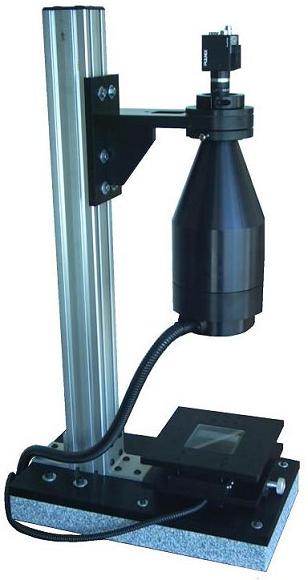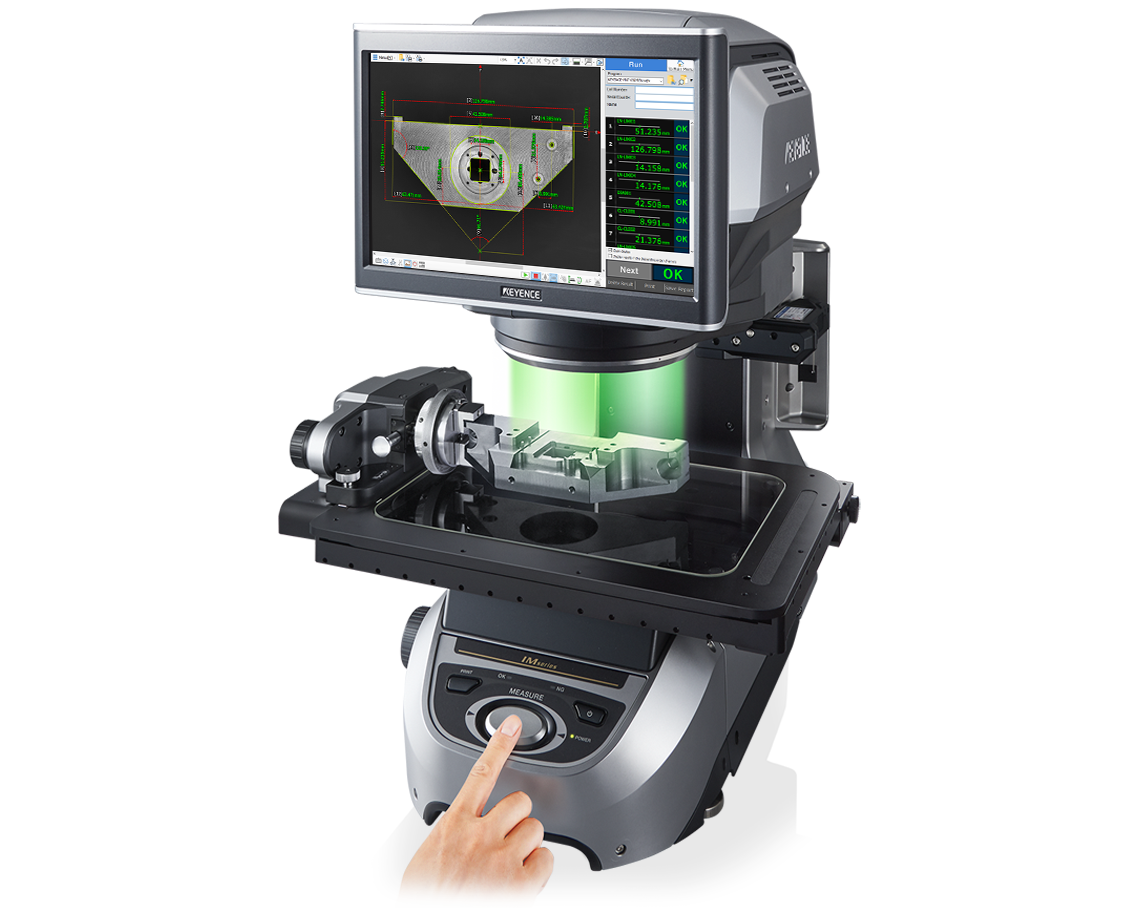Boost product reliability with optical measurement during final inspection stages
Boost product reliability with optical measurement during final inspection stages
Blog Article
The Duty of Optical Measurement Systems beforehand Width Methods
Optical measurement systems have actually changed metrology, bringing a degree of accuracy that was once unbelievable. You may be amazed to learn just how these innovations, based on basic principles like representation and disturbance, are applied throughout various sectors. Their non-contact abilities not only improve accuracy however also simplify processes. As you discover further, you'll uncover exactly how these systems are shaping the future of dimension and quality assurance.
The Development of Width: A Historical Point Of View
As you explore the history of width, you'll find that its development mirrors humanity's mission for accuracy and standardization. From ancient people making use of body parts as systems of dimension to the development of standardized weights and procedures, each action shows our wish for precision. The Egyptians constructed the pyramids using exact measurements, while the Romans advanced engineering with their innovative measuring devices.
During the Renaissance, scientific developments changed the focus toward a lot more empirical approaches, leading the way for contemporary assessment. The intro of the statistics system in the late 18th century noted a significant turning point, establishing global criteria. Throughout the 20th century, technical innovations further transformed metrology, allowing very exact dimensions in numerous areas.
Today, width remains to evolve, integrating digital innovation and automation. This background highlights not just the importance of measurement but also our relentless pursuit of enhancing accuracy and consistency in our increasingly complex globe.
Concepts of Optical Dimension Solutions
Comprehending the principles behind optical measurement systems is vital for precise cause metrology. You'll intend to take right into account basic optical principles, measurement accuracy variables, and reliable system calibration methods. Each of these aspects plays an essential role in guaranteeing your dimensions are exact and trusted.
Essential Optical Principles
While discovering optical dimension systems, you'll come across fundamental optical concepts that develop the backbone of accurate information procurement. Light acts in foreseeable methods, and recognizing these habits-- like diffraction, refraction, and reflection-- is necessary for efficient dimensions. You'll make use of lenses and mirrors to manipulate light and concentrate it onto your target, making sure precision in your analyses. Additionally, the wave nature of light permits interference patterns, which can enhance dimension resolution. Polarization can also play a crucial role in distinct signal from noise, boosting the clearness of your outcomes. By understanding these principles, you'll be equipped to take advantage of optical innovations effectively, leading the way for developments in metrology and ensuring your dimensions are both repeatable and dependable.
Dimension Accuracy Factors
To achieve high measurement precision in optical systems, a number of variables come into play, affecting the integrity of your outcomes. First, the top quality of the optical parts matters greatly. Top notch lenses and detectors lower aberrations and sound, guaranteeing your dimensions are exact. Second, ecological conditions like temperature and humidity can affect measurements, so keeping a secure atmosphere is necessary. Third, the placement of the optical system is essential; also minor misalignments can result in significant mistakes. Ultimately, the wavelength of light utilized effects the resolution and accuracy of your dimensions. By resolving these aspects, you can improve the overall efficiency of your optical dimension systems, resulting in more dependable and accurate lead to your metrology applications.
System Calibration Methods
Achieving high measurement precision is only part of the formula; correct system calibration techniques are similarly essential in optical measurement systems. To ensure your system supplies dependable results, you need to frequently adjust it using conventional referral materials. Start by changing the optical elements, like lenses and mirrors, to decrease systematic errors. Next, utilize recognized dimensions to validate the system's output and make necessary adjustments. It's likewise vital to make up ecological factors-- temperature and humidity can affect measurements. Execute a routine calibration routine to preserve consistency gradually. Lastly, record all calibration treatments and results; this will assist you track performance and deal with any type of drift in accuracy. With these methods, you'll enhance the dependability of your optical dimension system.
Key Technologies Behind Optical Measurement
Optical dimension systems rely upon several key modern technologies that boost accuracy and efficiency in width. One necessary innovation is interferometry, which uses the disturbance of light waves to determine small variations and surface abnormalities with severe precision. You'll additionally discover laser scanning systems, which capture thorough 3D data of objects promptly, making them indispensable for dimensional analysis.
In Addition, CCD and CMOS sensors play a substantial function in transforming light into electric signals, enabling high-resolution imaging and precise dimensions. Advanced algorithms for image handling further enhance measurement accuracy by analyzing information in real time, removing sound and enhancing functions.
Finally, optical fiber provide versatility and the ability to determine in hard atmospheres while keeping signal integrity. By leveraging these innovations, you can attain exceptional lead to your metrology tasks, making sure that your measurements are both precise and trusted.
Applications of Optical Measurement in Market
As markets significantly demand precision and effectiveness, the applications of optical dimension systems have actually become important throughout numerous fields. In manufacturing, these systems help you keep an eye on measurements and resistances in real-time, ensuring quality control without lengthy hands-on checks. In the auto sector, optical dimensions assist in aligning components with precision, improving security and efficiency.
In electronic devices, you're utilizing optical approaches to evaluate min attributes on motherboard, detecting defects that could lead to failures. The aerospace sector take advantage of non-destructive testing techniques, enabling you to analyze products check this site out and components without compromising their stability.
Optical measurement also plays an essential function in textiles, ensuring fabric measurements fulfill specific specs. optical measurement. With their capacity to supply high-resolution data rapidly, these systems empower you to make informed choices, enhance processes, and ultimately drive innovation throughout your sector
Enhancing Accuracy and Efficiency in Dimensions
When you assume regarding enhancing precision in dimensions, precision in your dimension methods is vital. By improving these procedures, you can accomplish quicker results without giving up top quality. Allow's check out just how embracing advanced optical dimension systems can raise both accuracy and effectiveness in your work.
Accuracy in Measurement Strategies
Precision in dimension methods is important for attaining reputable cause assessment, especially given that small disparities can result in substantial mistakes. By utilizing sophisticated optical measurement systems, you can improve the precision of your measurements. These systems give high-resolution data that aid you spot also the tiniest variants in dimensions. When you take on these technologies, you decrease uncertainties and enhance repeatability in your procedures. Furthermore, exact dimensions allow you to preserve quality assurance, ensuring that products satisfy rigorous specifications. This not only improves your credibility however additionally boosts customer complete satisfaction. Spending in accuracy dimension devices ultimately results in boosted performance, reduced waste, and optimized production cycles. Accepting these methods will certainly change your strategy to width, yielding remarkable results.
Simplifying Dimension Processes
To enhance accuracy and performance in dimensions, enhancing your measurement processes is important. Start by taking on optical dimension systems that supply real-time data, reducing visit our website the moment invested on hands-on recording. These systems frequently incorporate flawlessly with existing software application, allowing you to automate information collection and evaluation.
Next, systematize your measurement protocols. By applying constant treatments, you decrease variability and improve repeatability. Do not fail to remember to routinely adjust your devices to guarantee its accuracy.

The Effect of Optical Dimension on Study and Development
As researchers undertaking to press the limits of development, optical measurement systems have ended up being crucial tools in the development process. These systems offer you with exact, real-time information that boosts your capacity to analyze complex materials and structures. In various fields, from biotechnology to aerospace, you depend on optical measurements to optimize designs and improve item efficiency.

With high-resolution imaging and non-contact approaches, you can decrease example disruption, find out here now enabling more accurate results. This ability to record minute information increases your R&D cycle, allowing you iterate designs quickly and efficiently. Optical measurement fosters collaboration across disciplines, as the data created is commonly quickly interpretable and shareable.
Ultimately, integrating optical dimension systems into your research not only boosts efficiency yet likewise deepens your understanding of the sensations you study. By leveraging these innovative methods, you're much better geared up to innovate and remain ahead in an affordable landscape.
Future Patterns in Optical Measurement Systems
With the quick innovation of technology, you're most likely to see significant changes in optical measurement systems that will redefine their application throughout numerous industries. You'll observe an approach boosted automation and combination of artificial knowledge, enabling for real-time data analysis and enhanced precision. Miniaturization is one more fad; portable devices will certainly enable measurements in tighter rooms, making them ideal for areas like aerospace and biomedical applications.
Additionally, the advent of innovative materials, such as photonic crystals, will boost sensitivity and resolution. Anticipate to see systems that can operate in tough settings, providing reputable measurements in severe conditions. Cloud-based analytics will certainly additionally play an essential function, providing you access to huge datasets for far better decision-making. As these technologies merge, you'll locate that optical dimension systems not just improve precision however likewise simplify operations, eventually driving advancement and performance in your tasks.
Often Asked Inquiries
How Do Optical Measurement Systems Compare to Standard Dimension Techniques?
Optical measurement systems offer greater precision and faster results contrasted to conventional methods. You'll discover they catch even more information points properly, lowering human error and boosting dependability, making them a favored selection in numerous applications.
What Industries Benefit The Majority Of From Optical Dimension Solutions?
You'll locate sectors like aerospace, automobile, and electronic devices profit most from optical dimension systems. These fields depend on precise measurements to ensure top quality and efficiency, improving performance and reducing prices via sophisticated technology.

Are Optical Measurement Systems Expensive to Implement?
Optical measurement systems can be costly to execute, but their precision and performance commonly warrant the expense. Spending in such innovation can bring about substantial long-term cost savings and renovations in high quality across different applications.
What Skills Are Called For to Run Optical Measurement Solutions?
To run optical measurement systems, you'll need strong logical abilities, interest to detail, and effectiveness in software program tools. Familiarity with optics and an understanding of measurement concepts will also improve your efficiency and efficiency.
Exactly How Do Ecological Aspects Influence Optical Measurements?
Ecological factors like air, temperature level, and moisture top quality can misshape optical dimensions. You'll notice variations in accuracy because of light interference or refraction. optical measurement system. Maintaining secure conditions is important for reputable and accurate optical measurement results
Conclusion
In summary, optical dimension systems are transforming width by providing unequaled precision and performance. By taking advantage of innovative principles and technologies, these systems boost precision while lessening interruptions in different industries. As you check out future patterns, you'll see exactly how the assimilation of AI and automation will certainly remain to elevate measurement practices, driving advancement and enhancing top quality control. Welcoming these innovations will certainly be important for staying affordable and accomplishing excellence in your area.
Attaining high dimension accuracy is only part of the formula; correct system calibration methods are just as vital in optical dimension systems.When you believe about improving accuracy in measurements, precision in your measurement techniques is vital. By making use of advanced optical measurement systems, you can boost the accuracy of your dimensions.To boost precision and performance in dimensions, simplifying your measurement procedures is essential. How Do Optical Measurement Systems Compare to Conventional Dimension Techniques?
Report this page